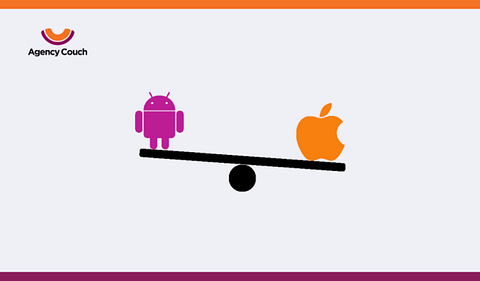Google search has been a target place for marketers, and rightly so because it has been dedicatedly improving its search results to optimize its user experience. According to a report by BrightEdge Research in 2019, 53% of the organic traffic comes from Google Search. So, it continues to integrate new quality parameters and elements into its algorithms.
With continuous modifications, the search engine refines the results to match the user’s query and gives more relevant results. In this pursuit, Google announced a new set of metrics called core web vitals in May 2020. These metrics have come into effect in June 2021. These core web vitals significantly impact the way web pages are ranked for any given search keyword.
Before we dive into a detailed discussion about these new parameters, let’s first understand how Google Search Algorithms work.
Google Search Algorithms
Internet is all about user experience. Google was once seen only as a search engine until people recognized its true potential. From content to website navigation every aspect of your webpage that is optimized for enhanced user experience takes you a step closer to ranking in Google search.
The search engine uses a complex system that evaluates a webpage for numerous ranking factors and decides its ranking for a user query. Google ranking process can be divided into three steps:
- Crawling: This term refers to the process where Google’s bots creep up the virtual web and look for new links and updated web pages. Every new website and webpage must be crawled in order to appear in search results.
- Indexing: In the next step, Google bots analyze the web pages for their content, images, and other media files and stores everything in Google database. This database is referred to as Google Index.
- Serving: Now, when a user enters a query into the search engine, it looks for the most relevant and helpful web pages, assigns them ranking based on various factors, and returns the results to the user.
Algorithms, as we mentioned earlier, play a crucial role in assigning this ranking to web pages. And it is done by evaluating a website against various matrics listed in the algorithms. Now, Google never reveals its algorithm or the parameters entirely to save the internet world from exploitation. But experts have narrowed down certain aspects of it through hit and trials, unofficial updates from Google and its employees, and some official updates that Google reveals from time to time.
Core Web Vitals (CWV)
Web vitals are Google’s initiative to provide developers, marketers, and website owners with guidance for quality parameters that are essential for enhanced user experience. As Google is committed to improving user experience, it values the websites that keep it their primary focus.
As per Google, core web vitals are the subset of these web vitals. The search engine has signaled that these web vitals will evolve over time and be crucial in your SEO game. So, every website owner should measure them. The metrics have even been surfaced in all Google tools across the web.
Introduction
Google’s core web vitals are a set of metrics that makes a webpage more user-centric. These vitals determine a page’s health in terms of page performance and user interactions.
The Role of CWVs in SEO
Page load time, response time, and user-friendliness of a webpage are already kept in high regard for SEO. These web vitals will serve as some of the major factors in Google ranking along with relevance. So, if your website publishes amazing content, but pays zero attention to user experience, you can see a remarkable drop in its reach and organic traffic.
There are three metrics of CWV that should be mandatorily measured as per Google. These metrics are:
Largest Contentful Paint (LCP)
LCP measures the loading performance of a webpage. In other words, this parameter is a measurement of how long the content of a website takes to load completely. According to Google’s guidelines, LCP should not be longer than 2.5 seconds.
From text to images, everything is taken into account while measuring LCP. The metric usually reports the largest element of the webpage in a user’s viewport. One way of improving your webpage’s loading time can be by keeping the intrinsic size and visible size of the images equal. LCP is majorly affected by the below factors:
- Slow Server Response Time
- Render-blocking JavaScript and CSS
- Resource load time
- Client-side rendering
First Input Delay (FID)
FID is an evaluation of how much time a webpage takes to respond to a user’s first interaction with it. These interactions can be a user tapping a button, clicking a link, opening a dropdown, or playing a video inside the site. In simpler words, FID measures the responsiveness of a website.
So, you can make your first impression on your users with a fast-loading and highly responsive website. Google also uses this measurement to assign your webpages ranking for Google search. The ideal FID score would be 100 milliseconds or less.
Cumulative Layout Shift (CLS)
The third and the last metric of core web vitals is Cumulative Layout Shift. CLS refers to the unexpected shifts while the user is on the page. CLS is a parameter that evaluates how stable your website is in term of its visual content.
It happens quite often when you are reading an article or about to tap on a link on a website, and the images and the text suddenly move. This kind of layout shift decreases user experience, and they might even leave it and move to another website to look for the needed information.
As per Google, the culprits behind these kinds of layout shifts are:
- A media file with unknown dimensions
- A font that renders larger or smaller than its fallback
- A third party widget that dynamically resizes itself
The CLS metric helps you find if this is an issue with your website, and you can look for root causes immediately. A good user experience would call for the CLS score of 0.1 or less.
Important Core Web Vitals Are?
As Google made an official announcement about core web vitals, these are going to be quite significant for SEO. Although these metrics, along with other web vitals, are important for the ranking of your webpage in the search engine, these will never snatch the power relevance and content hold. John Mueller, the Webmaster Trend Analyst at Google has stated that the relevance will still be the primary ranking factor for websites.
You can’t rely on core web vitals without optimizing your content. If your competitors have a strong content plan and have, as well, fater web pages, they are more likely to rank higher in Google Search.
So yes, CWVs are important, but they are a minor part of SEO— Minor but essential.
The Essential Solution
The core web vitals reports tell you a lot about your website and the loopholes you need to pay attention to. It’s all about creating a user experience that is not only essential to rank in Google search but is also crucial if you want a loyal and returning user base.
So, keep the fluff out of your codes, reduce the website load time, and work with your developers’ team to figure out ways to improve your website’s performance. You can also go the extra mile to hire verified users for user-testing your website before you launch it on the web.
Conclusion
This article is a glimpse of what core web vitals are and how important they are for SEO. There are other web vitals too that Google takes into consideration to assign rankings to different websites. Remember, you can’t compromise the quality of your content and services even after successfully creating an unforgettable first impression on your users.



